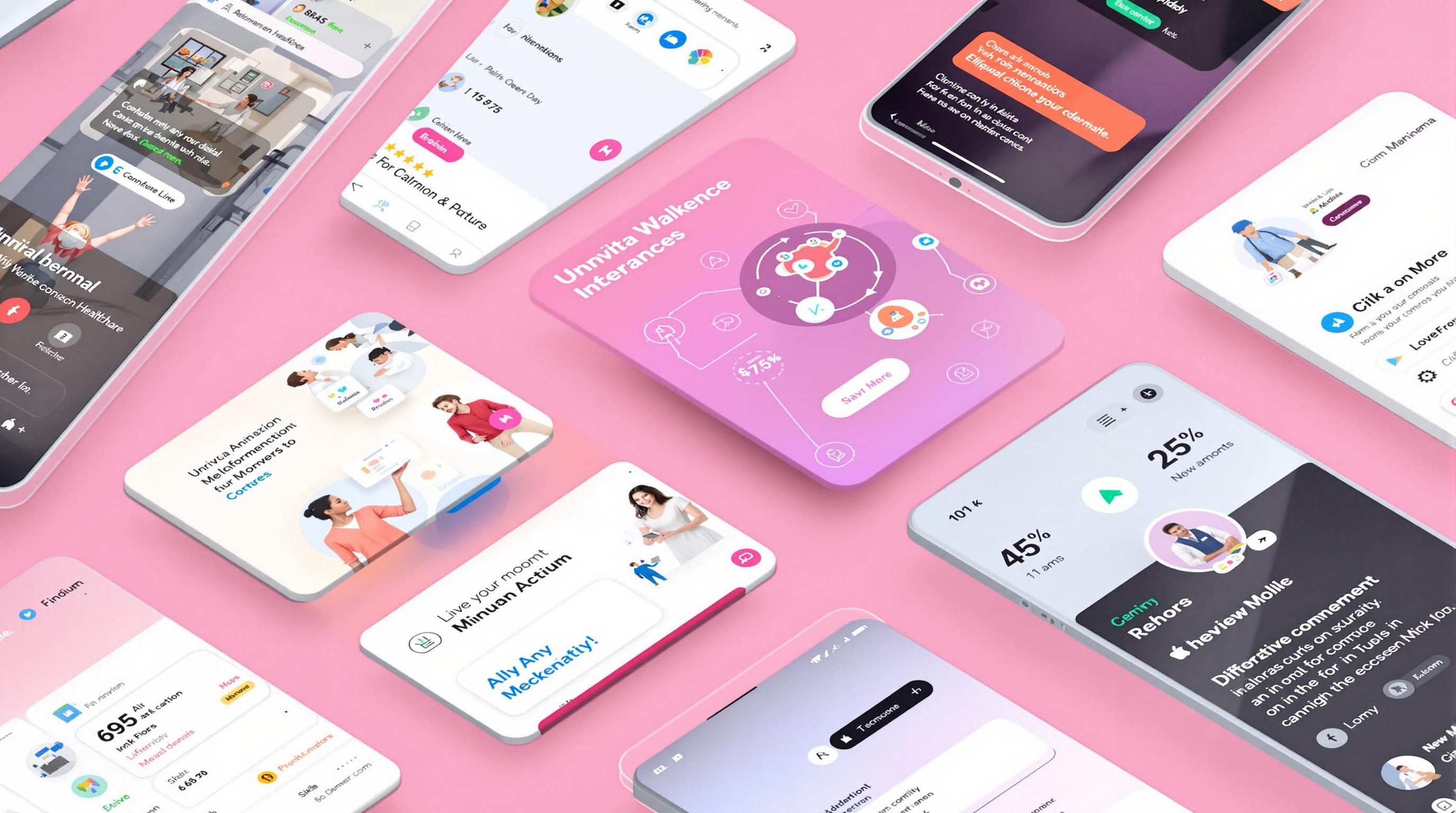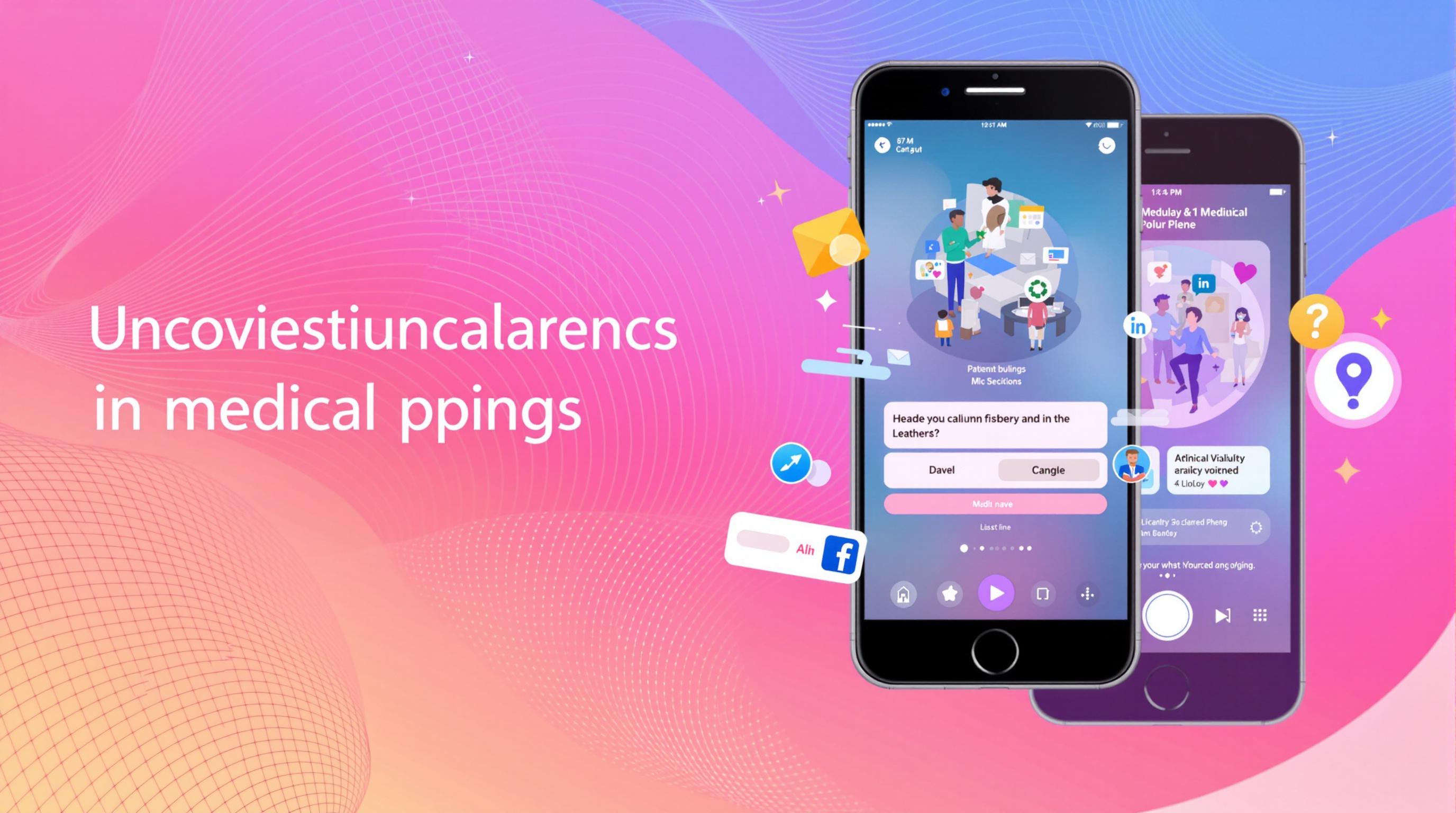Related Articles
- 7 Innovative Medical App Interfaces From the Last Five Years That Redefine User Experience in Healthcare
- Unlocking the Unseen: How Unconventional Data Sources Are Redefining Personal Wellness Tracking
- Unveiling the Silent Signals: Unexpected Links Between Sleep Patterns and Rare Immune Disorders Explored
- 7 Emerging Health Analytics Platforms Revolutionizing Predictive Care Effectiveness Since 2019
- The Untold Impact of Medical Coding Errors on Patient Outcomes and Healthcare Ethics
- 7 Game-Changing Telehealth Security Solutions Released Since 2019 You Need to Know About
7 Innovative Medical App Interfaces From the Last Five Years That Redefine User Experience in Healthcare
7 Innovative Medical App Interfaces From the Last Five Years That Redefine User Experience in Healthcare
Discover how the latest medical app interfaces are transforming healthcare, making it more accessible, personalized, and intuitive for users of all ages. This article explores seven groundbreaking designs from the past five years that stand as exemplars in redefining user experience in medical technology.
As a 42-year-old digital health enthusiast, I have witnessed firsthand the staggering advancements in healthcare interfaces. One can hardly exaggerate the importance of intuitive design when it comes to medical applications, whose users range from tech-savvy teenagers to septuagenarians managing chronic conditions. Indeed, a properly crafted UI can pivotally affect healthcare outcomes by improving adherence, engagement, and patient confidence.
Case Study: Ada Health's AI-Based Symptom Assessment
Imagine an app that acts like a virtual physician assistant. Ada Health’s symptom checker employs cutting-edge AI to guide patients through their symptoms using a conversational interface, blending clinical accuracy with empathetic user guidance. Launched within the last five years, it has been downloaded over 15 million times and boasts an accuracy that rivals human doctors in initial assessments (Nature Digital Medicine, 2019).
The app’s clean design reduces user anxiety by simplifying complex medical jargon into accessible language, fostering trust without compromising thoroughness. Especially beneficial for younger users, it transforms what could be a nerve-wracking self-diagnosis into an educational dialogue.
The Humorous Twist: Buoy Health's Chatbot Charm
Who said medical apps have to be dreary? Buoy Health, a symptom checker app, injects a touch of humor and personality into its dialogue, making users feel at ease during stressful health inquiries. Its UI cleverly intertwines playful animations and conversational tones that mitigate the cold clinical vibes typical of many health apps.
This approach, surprisingly effective, increases engagement by 30%, according to internal user retention statistics shared in 2022. The app’s cheerful interface breaks down barriers to health literacy, especially for younger audiences intimidated by medical terminology.
Formal Analysis: Dexcom G6 Controller—Elegant Functionality for Diabetes Management
Turning to chronic disease management, the Dexcom G6 continuous glucose monitoring (CGM) app embodies a marriage of sleek aesthetics and rigorous functionality. Its interface permits real-time glucose readings with astonishing clarity, backed by vibrant graphs and alerts that employ color theory strategically: warm colors to signal urgency, cool hues to soothe.
The FDA-approved device’s UI was lauded in a 2021 Journal of Medical Internet Research article for reducing hypoglycemic events by 17% through its intuitive alert system. Designed for a broad age range, from adolescents learning to self-manage diabetes to elderly users, the app exemplifies clarity without sacrificing depth.
Storytelling Spotlight: Mental Health and the Calm App
Let's journey into the realm of mental wellbeing with Calm, the meditation app that marries therapeutic content with a serene interface designed to reduce cognitive load and stress. Imagine starting your day stepping into a tranquil woodland, as the soft hues and gentle animations coax your mind toward mindfulness.
Recent reports indicate that Calm users experience a 23% reduction in stress levels, a testament to the app’s effective blend of user-centered design and evidence-based therapy tools (American Psychological Association, 2023). The app’s success lies in its ability to tell a calming story through design elements, providing not just an app—but an experience.
Conversational Reflection: Telehealth Goes Live with Amwell
In the age of pandemics and social distancing, Amwell has been a game changer, revolutionizing telehealth interfaces to feel as personal as an in-office visit. The platform's UI prioritizes simplicity: large buttons, clear call-to-actions, and minimal navigational steps—all reflecting user feedback gathered from thousands of virtual consultations.
With usage spiking by over 300% during the COVID-19 outbreak (CDC, 2021), Amwell demonstrates how a fuss-free, accessible design can support diverse user groups, including seniors less comfortable with technology. Its success underscores a vital principle: sometimes, less truly is more.
Persuasive Argument: Why Fitbit’s Health Dashboard Is More Than a Fitness Tracker
Think Fitbit is just about counting steps? Think again. The Fitbit app’s comprehensive health dashboard integrates sleep, heart rate, and activity data into a harmonized interface that empowers users to make informed health decisions. The visual summaries cater effectively to varied literacy levels, employing intuitive icons and color gradients that guide interpretation.
Research from Stanford University in 2022 found that users engaging regularly with Fitbit's dashboard exhibited a 25% increase in physical activity over six months. The clear, goal-oriented design fosters motivation by transforming raw data into a narrative of personal achievement.
A Glimpse into the Future: Apple Health Records' Unification Approach
Apple’s Health Records app stitches together fragmented patient data from multiple institutions into a centralized, patient-friendly interface. By presenting complex medical histories in digestible segments enhanced with visual aids, the app alleviates confusion and empowers users to participate actively in their healthcare.
Launch data indicates an 82% satisfaction rate among users aged 30-65, a demographic traditionally challenged by managing medical paperwork (Apple Inc., Annual Report 2022). The project's continued evolution promises a future where integrated health data will seamlessly support clinical decisions and patient education alike.

